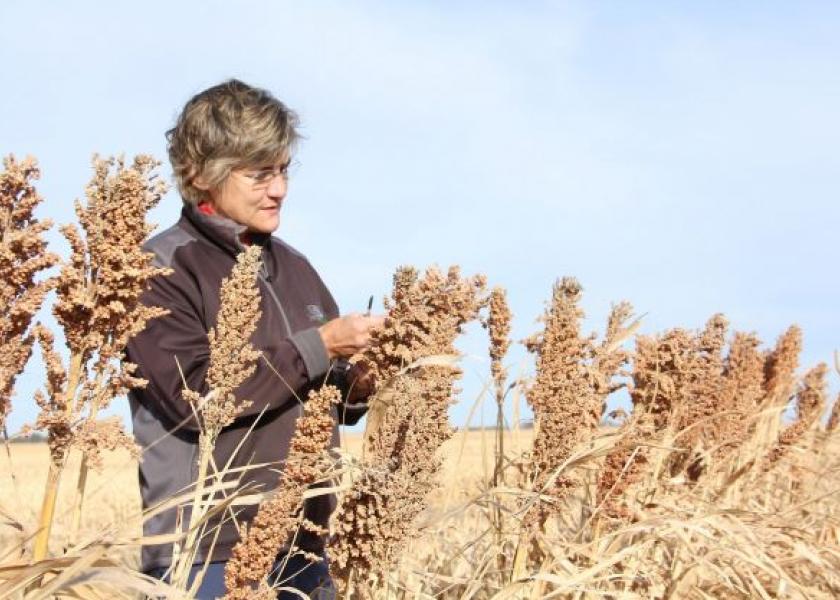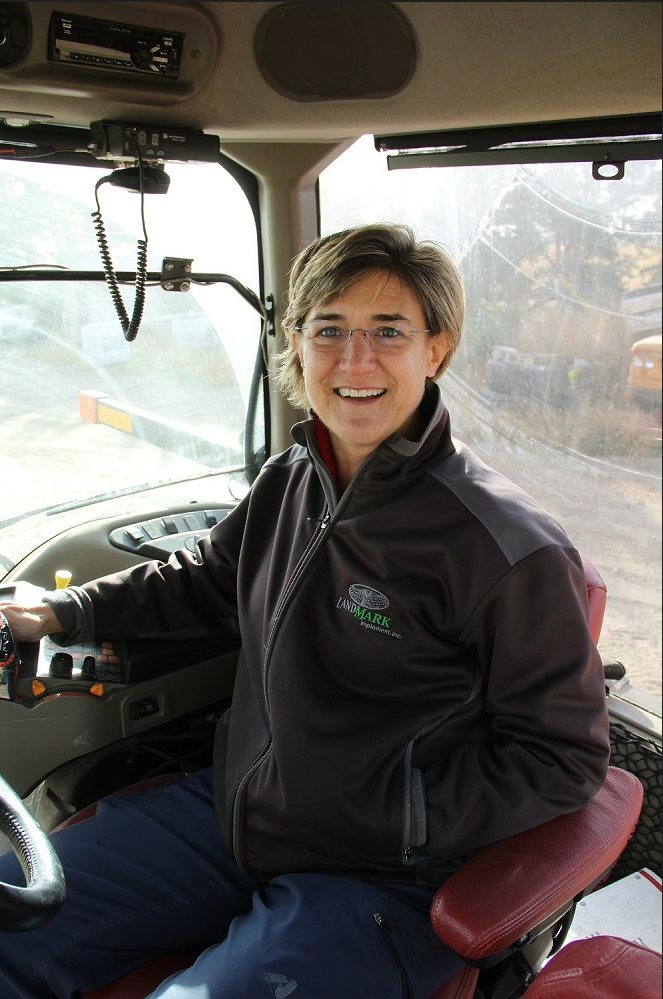How Conservation Farming in Southwest Nebraska makes Sunny Heights Farm Viable

Editor’s note: America’s Conservation Ag Movement has embraced farmer-to-farmer knowledge transfer as a key pillar in the strategy to accelerate regenerative ag practice adoption. At the center of the farmer learning communities, exceptional farmers have stepped forward to lead these efforts in their communities. These individuals are leaders in their own innovation and implementation of practices and programs that fit for their unique farm operation and help achieve the goal of continuous improvement. This profile is part of a series of that will highlight these Conservation Stewards, their farms, and their conservation practices throughout the year.
Tracy Zink’s conservation journey began intrinsically as a young girl in windswept western Nebraska just south of the Sandhills. She remembers the trees that her grandparents planted for windbreaks on the family farm in Indianola, accompanied with stories from her grandmother about how they would save their soils from being blown across the high desert. Conservation wasn’t common in much of the country back then, but in southwest Nebraska it was essential.
That memory still drives her to build on the progress of previous generations and employ practices that could give her an edge against the unrelenting weather on her about 3,000 acres of corn, soybeans, wheat, grain sorghum and pastures.
Natural resources are closely managed in southwest Nebraska. Water optimization is crucial in a region that gets about 20" of rainfall per year, although it’s been dryer in recent years. Pervasive winds force farmers to keep a close eye on erosion. And crop rotation, crop residues and covers are critical for soil health and stability.
“Everything we do is conservation minded for water and soil erosion, and there is no incentive for that except the viability of our farm,” Zink says. “And if we don’t do that, then we won’t be here.”
Trust In Food: How long have you been conducting conservation stewardship practices and programs? What impact have they had on your operations?

Trust In Food: What does the term “climate-smart agriculture” mean to you?
Zink: Climate-smart agriculture at its heart is an evaluation of your area’s environmental trends and multiple plans of action that will allow an operation to adapt quickly and in a sustainable manner.
Trust In Food: What would you consider your greatest achievements or strengths? What else do you want to accomplish in the next year?
Zink: In this moment I feel my greatest achievement has been finding my way back to the farm. I was blessed with incredible experiences and opportunities all over the globe and while it shaped me into who I am, it never provided the right environment to establish roots or feel settled. The farm that I ran from as a youth has become my place of true joy, and I have a wonderful contentment that is near impossible to put into words.
In the next year it is my goal to get everything done earlier!
Water conservation and irrigation with our pivots is crucial because we have so little. By late August we’re gasping for air, and we have to turn our pivots off and let the wells recharge. The strip tilling helps preserve moisture so everything that falls is more easily absorbed into the soil profile to make every drop count. We adjust the sprinkler heights so nothing is hitting, and we stagger sprinklers every 20 feet. We apply just enough to reach the soil capacity. We don’t want any runoff at all. And we can do little things to decrease compaction to increase absorption potential.
We’ve also increased yields with a corn-soybean rotation and found that it’s the most profitable for both crops.
Your efficiencies must improve when you’re trying to improve your crop. You have to force yourself to be efficient. I’d rather focus on the little things to do right and have a better return than getting more acres. I try to put more bushels in the bin and maximize what we have before we get more land.
Trust In Food: Have they had any agronomic impact? Financial impact?
Zink: The efforts we make to conserve water are never-ending. We believe it is both a necessity and a responsibility, and if it wasn’t at the front of all our decisions, then we could not make the financials work.
We routinely review our sprinkler packages and walk the pivots to ensure efficiency, we strip till our irrigated ground to help absorb every drop from above and through the pivot, and we are experimenting with different moisture probes and pivot systems to save every drop we are gifted.
Trust In Food: What other opportunities do you see on your farm or the farms around you?
Zink: There is always a new technology to evaluate along with efficiencies, production improvement, input reductions, etc. I feel the lowest-hanging fruit often gets overlooked, and it’s actually the best place to start. The top-down has never felt like a positive approach in my opinion.
In terms of low-hanging fruit, tillage practices are a big one, along with the residues that you leave and crop rotation. You don’t always have the flexibility to make some decisions, but not making a decision is a decision too. How long do you leave your stubble height? Do you let cattle graze? What do those practices do for the savings of nutrients for next year? Can you introduce sorghum and get the same soil implementation from the root structure that you get with a deep chisel? I think so.
We’re continually experimenting with new hybrids and adjusting our seeds per acre to get better yields.
There is nothing about farming that you can evaluate in 365 days, not soil nutrients, crop type or taxes. It’s a continuous process of trying new things, and the low-hanging fruit matters.
Trust In Food: What state or local organizations have helped you in identifying opportunities or helped you implement practices and programs?
Zink: The University of Nebraska at Lincoln (UNL) extension agents have been instrumental in helping me quickly get my footing as a producer in western Nebraska. I frequently refer to several threads that have historical conversations between producers from across the county. The TAPS program with UNL has been an incredible experience and one I can’t stop talking about! I subscribe to countless newsletters as well as magazines and try to stay aware of practices and current issues that are impacted other parts of our county because I know they will inch toward us.
The FSA and NRCS offices have been a valuable resource. Every time I’ve had a question about anything, they get me the right contact, so they are one of the first places I go. Those relationships have brought me into the organization in a way where I truly wouldn’t be where I’m at today without my FSA financial person and program person that talks me through the programs, such as crop insurance.
Trust In Food: What advice would you give other farmers as they continue to consider climate-positive practices? Have you had any failures or lessons learned in your journey that you learned from? What would you do differently with what you know today?
Zink: We have a responsibility to the land that we manage. It is a living and breathing creature and as its caretaker, it’s near criminal to not provide it the very best care we can offer. I also believe it is unproductive to cast judgement on someone who may have limitations to achieve the level we believe is best practice. It’s education and exposure that can move the needle.
What works one year may be a colossal failure the next. Mother Nature rules all, and we just have to roll with the punches and have options. And surround yourself with positive and smart people!
If you’re always doing the same thing then you’ll always get the same thing. Take the path less traveled. The straight line isn’t always the best way to get somewhere. If I’m not failing, then I’m not trying hard enough. Without failure then you’re not going to get to a new level of success.
How an Arkansas Farmer Found Counsel for Climate-Smart Practices to Grow the Best Crop
Planting Green Drives Bold Changes for Indiana Farmers Focused on Soil Health and Conservation
Three Conservation Ag Insights from Illinois Farmer Craig Swartz







